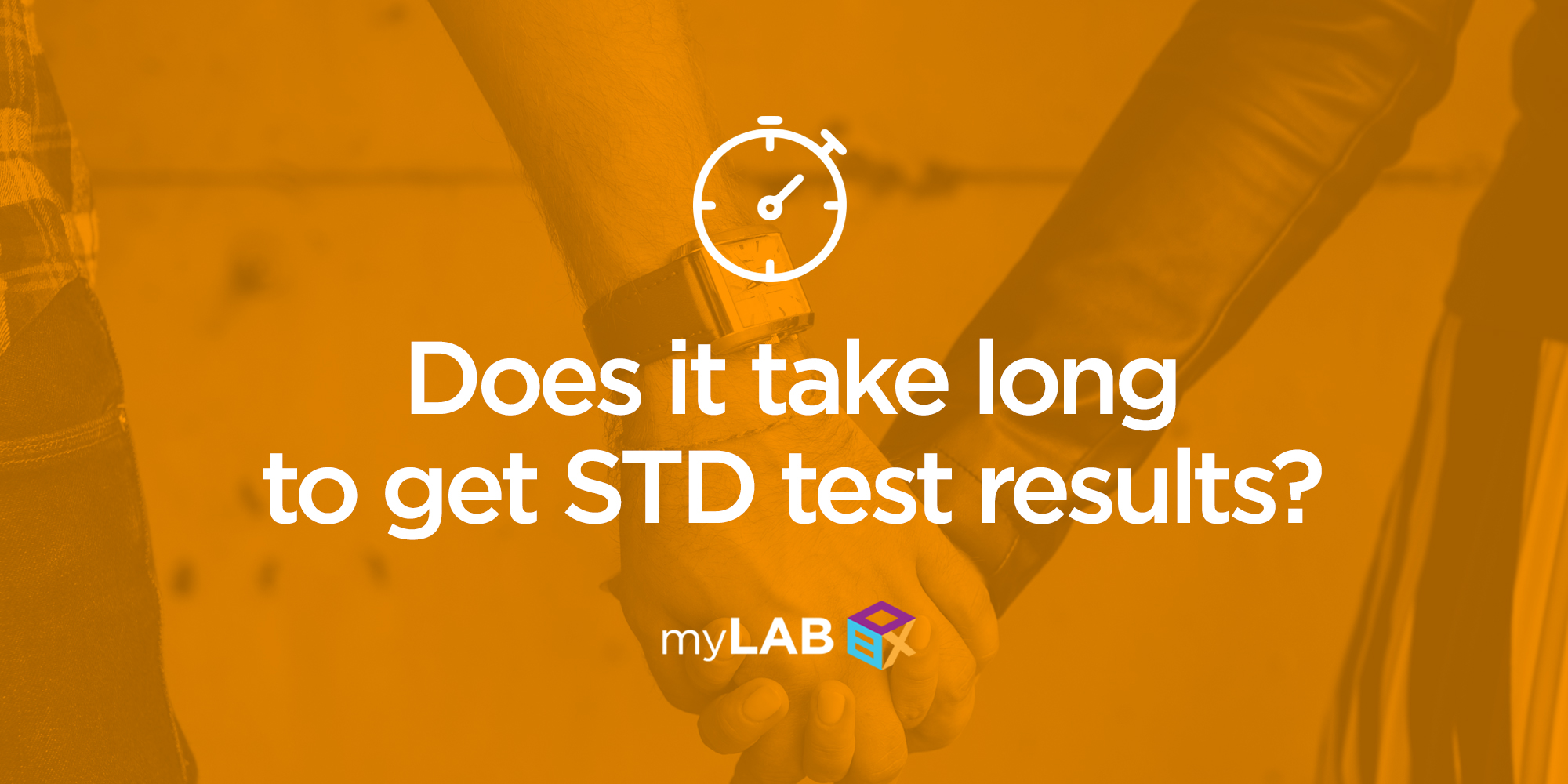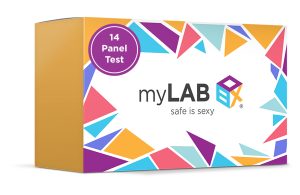How Long Does it Take to Get STD Test Results?

| ❖ Free physician consultation ❖ Mail-in kits for home use ❖ Test in just 5 minutes ❖ Lab results in 2-5 days ❖ 100% pain free ❖ Enjoy free shipping |
To Order By Phone Click Here (800)856-9522
The time that passes between being tested and getting results can certainly get your nerves in a bundle. First of all, the fact that you’re looking to get tested is a great start! But exactly how long does it take to get STD results anyway? Unfortunately, the answer to this question may deter some people from following through with a clinic test.
How Fast Do STD Results Come Back From the Clinic?
The timing between testing and results can be iffy at a clinic or doctor’s office. The truth is, this answer can vary from “several days” to “you may never get your results at all”!
Most clinics require you to make an appointment. Once you’re able to get in to see a medical professional – which may take a few hours or a few days – they may be able to take and examine your sample at the same time. For STD tests where a swab is examined, the medical professional may be able to take a look under a microscope and give you answers pretty quickly, but the accuracy of the results are highly dependent on the expertise of the microscopist.[1][2] Some STDs like genital warts or crabs just need a visual examination for a diagnosis, and that can be accomplished quickly.[3] However, most STD test samples must be sent away to a lab for evaluation. Wait time on a lab can be one day, one week or more.
Often, medical facilities have a policy to call patients only when results are positive, so if your results are negative, you may not be contacted. In these cases, you’ll need to call the facility yourself to find out your status for sure.
Even though you may not get your own results, your insurance company, its affiliates and the Medical Information Database will. So not only are you testing without the promise of results, your privacy is at risk as well.
Fortunately, there are now innovative alternatives to the traditional methods of STD testing. You can now test for sexually transmitted infections from the comfort of home. For many people, this is a far more convenient, affordable and reliable approach to your health.
Order Your Kit Now & Test AT Home!
How Fast Do STD Results Come Back from at Home Tests?
As mentioned above, an at-home STD test offers a much easier solution. The whole process requires only a few minutes of your time. Unlike testing at medical clinics, home STD test kits allow you to take things into your own hands, from the privacy of home. You can order a test kit for specific STDs or a test kit that allows you to screen for multiple STDs at once (the Total Box), which will be discreetly shipped to your door in a few short days. There’s no need to make any inconvenient appointments. Once your package arrives, you can screen yourself quickly and privately. Depending on which infection you are screening for, you will be required to provide a swab, urine sample, or a blood sample. Simply send the sample back to our lab in the pre-paid return envelope and receive your secure results online. The whole process, from start (ordering) to finish (getting results), is 4-14 days, depending on shipping time.
Are There Same Day STD Test Results?
First things first, many people who search for STD testing options start looking for same day STD test results. When it comes time to get tested, same day STD results are everyone’s obvious preference. Unfortunately, this term can be misleading. The truth is that while many clinics, labs and other STD testing services will throw around the term “same day STD results,” it can take anywhere from a few business days to several weeks to actually get those results.
There are a number of reasons why it can take longer than advertised. A variety of factors come into play, from the incubation and testing timeframes of each STD to the workload of the lab or clinic doing the testing. There are a lot of myths and truths surrounding same day STD testing. It’s important to familiarize yourself with them so you can manage your expectations. Nobody should blame you for wanting quick results, but it’s best to wait and make sure the results you receive are accurate instead of being confused by a false positive or negative.
When Should I Test Myself?
Routine testing will always be the key to understanding your sexual health status. As always, the best course of action is simply knowing when you need to test. If you’ve been sexually active, it’s time to get tested. It’s as simple as that.
Knowing and recognizing the visible symptoms of the most common STDs isn’t enough. Many of these infections can be asymptomatic, so frequent testing is the fastest route to peace of mind.
How Long Does it Take for an STD to Show Up on a Test?
If you’re wondering how long it takes for an STD to show up on a test, we assure you – you’re not alone! This is a common, and smart, question to be asking. After all, you want to make sure that your test results are as accurate as possible.
Unfortunately, the answer here is not a simple one. Each sexually transmitted disease and infection has a different incubation period. This means that the infection will not be detected in your system immediately after having sex. The timeline for when to get retested after treatment can also vary. So let’s go over this with a guide that establishes proper testing periods for many of the common STDs in the United States.
Chlamydia
When to Test: seven days after sex
Retest: three weeks after treatment ends
Gonorrhea
When to Test: seven days after sex
Retest: three weeks after treatment ends
Syphilis
When to Test: two weeks after sex
Retest: six weeks to six months after treatment ends
Hepatitis C
When to Test: three weeks after sex
Retest: Additional testing should be done by a clinical provider
Genital Herpes (HSV-2)
When to Test: two weeks after sex
Retest: Retesting is not necessary after treatment
As you can see, depending on the infection you were exposed to, it can take anywhere from a single day to several months. These timeframes are a general guideline. To ensure safety, it is recommended that sexually active adults test every three to six months. This is the best way to properly test, diagnose and treat sexually transmitted infections.
Order Your Kit Now & Test AT Home!
Reviewed by Luis Ferdinand M. Papa, MD, MHA
References:
-
[1] Wet mount preparation (taking a swab of vaginal discharge and using a microscope to determine the presence of an infection) is a quick and cost effective method for testing but its accuracy depends on the skill of the microscopist. In this study, wet preparation only found Trichomonas in 36% of infected patients.
Diagnosis of Trichomonas vaginalis Infection by PCR Using Vaginal Swab Samples. Journal of Clinical Microbiology November 1998.
-
[2] Wet mount preparation is the most common method for diagnosing Trichomonas infection in a clinic even though it is highly dependent on the skill and experience of the microscopist as well as the quality of the sample.
Improved Diagnosis of Trichomonas vaginalis Infection by PCR Using Vaginal Swabs and Urine Specimens Compared to Diagnosis by Wet Mount Microscopy, Culture, and Fluorescent Staining. Journal of Clinical Microbiology December 1999.
-
[3] External genital warts are usually due to HPV infection. The recommended method for primary diagnosis is physical examination.
. External Genital Warts: Diagnosis, Treatment, and Prevention. Clinical Infectious Diseases 2002.
Popular Tests

Total Box
14 Panel STD Test
In Stock – Free Shipping
$369 – $399
